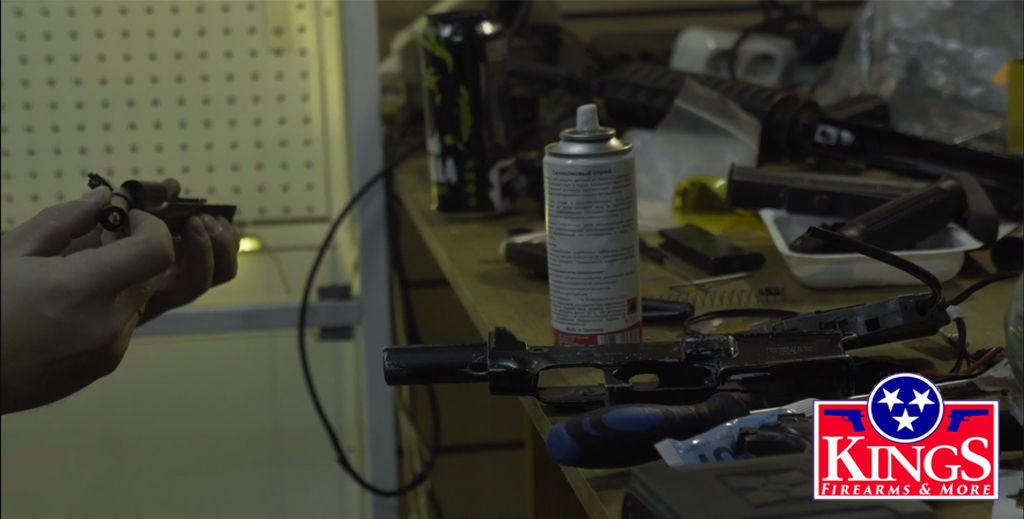O Cambrian Period Devonian Period O Ordavician Period O Pennsylvanian Period. Devonian Life Among invertebrates, the ammonite mollusks appeared, and crinoids, coral, and brachiopods remained common and thriving. Particularly important was the position of the southern land masses (see above). The Devonian time period is known by a few other names; such as "The Age of Fishes", "Old Red Age", and also as a "greenhouse age". Forests and the coiled shell-bearing marine organisms known as ammonites first appeared early in the Devonian. Note the location of the large continent over the south Pole by the late Devonian Period. The Devonian Period occurred from 419.2 million to 358.9 million years ago. What period did the dinosaurs become extinct. Their maximum height went from 30 cm at the start of the Devonian, to 30 m archaeopterids, at the end of the period. The great. How did the dramatic growth of seedless vascular plants during the Devonian and early Carboniferous period affect the Earth and other life forms? Silurian Period, in geologic time, the third period of the Paleozoic Era. It is named after Devon, England, where rocks from this period were first studied.. The Carboniferous is a geologic period and system that spans 60 million years from the end of the Devonian Period 358.9 million years ago, to the beginning of the Permian Period, 298.9 Mya. This huge (about 30 feet long and three or four tons), armor-covered prehistoric fish was probably the largest vertebrate of its day, and almost certainly the largest fish of the Devonian seas. This period has plenty of marine invertebrates. Only one of these, at the end of a time interval called the Frasnian, is normally considered large enough to be one of the "Big Five." When did they happen? According to the International Commission on Stratigraphy (Ogg, 2004), the Devonian extends from the end of the Silurian Period 419.2 ± 3.2 Mya, to the beginning of the Carboniferous Period 358.9 ± 0.4 Mya (in North America, the beginning of the Mississippian subperiod of the Carboniferous. 390 million years old. The Ordovician (/ ɔːr. Armored jawless fishes became abundant, as did early Chondrichthyes (sharks and rays). study resourcesexpand_more. The end-Frasnian extinction happened about 375 million years ago. Entering the Carboniferous period around 360 million years ago, trees were prolific and a major part of the plant life community, mostly located in coal-producing swamps. Date range: 419.2 million years ago to 358.9 million years ago. The Devonian saw the explosive diversification of vertebrate life (e.g., new fish species that proliferated in both marine and freshwater . The Devonian (de-VO-nee-an) Period, beginning around 410 mya, is often called the time of the fishes because so many new types of fish first appeared during this period. close. Length: 41.6 million years (0.92% of geologic time) Geologic calendar: November 23 (Noon)-November 26 (7 PM) (3 days, 7 hours) Ordovician age fossil brachiopods, Mississippi National River and Recreation Area, Minnesota. The Mississippian is a subperiod in the geologic timescale or a subsystem of the geologic record. ən, saɪ-/ sih-LYOOR-ee-ən, sy-) is a geologic period and system spanning 24.6 million years from the end of the Ordovician Period, at 443.8 million years ago (Mya), to the beginning of the Devonian Period, 419.2 Mya. 60 million years from the end of the Silurian , 419.2 million years ago 38.What were two index fossils for the Devonian? Devonian Period, evidenced by the absence of outcrops of rocks of Early Devonian age in central Kentucky. Note the location of the large continent over the south Pole by the late Devonian Period. It starts with the Cambrian period, followed by the Ordovician, Silurian, Devonian, Carboniferous, and Permian. Entering the Carboniferous period around 360 million years ago, trees were prolific and a major part of the plant life community, mostly located in coal-producing swamps. Information and definition of devonian period, geology, fauna and flora. abdomen). The earliest insects were huge. It began 443.8 million years ago and ended 419.2 million years ago, extending from the close of the Ordovician Period to the beginning of the Devonian Period. Devonian Period, in geologic time, an interval of the Paleozoic Era that follows the Silurian Period and precedes the Carboniferous Period, spanning between about 419.2 million and 358.9 million years ago. Two major animal groups colonized the land during the Devonian. The Cambrian Explosion saw an incredible diversity of life emerge, including many major . It began 443.8 million years ago and ended 419.2 million years ago, extending from the close of the Ordovician Period to the beginning of the Devonian Period. A drawing of Elginerpeton pancheni, an early tetrapod from the Late Devonian period. Study Resources. NPS image. However, this creature did not just waltz gracefully out of the sea onto the shore and continue running. Insert and image as part of your answer. These plants were a huge untapped source of food. When in the devonian period were fish developed? Rocks from this era preserve many thousands of spores that appear to be scorched by . Devonian Period (417-354 mya) Intense reef building activity in shallow-water habitats indicates that the Devonian climate is, on the whole, warm and stable. G.R. First week only $4.99! Ichthyostega devonian dinosaur, dinosaur park. Paleozoic. Period during which land plants began to develop. What era is the Silurian period in? During the Devonian these evaporite deposits were found well beyond 30o north and south. This is the last in a 10-part series arguing that fossils record the Earth's recolonisation after a mass extinction near the very beginning of history. When Did the Silurian Period Start? The Devonian began with a flourishing of life and genetic diversity, and ended with mass extinction.. 37.When did the Devonian period start and end? Devonian Period, in geologic time, an interval of the Paleozoic Era that follows the Silurian Period and precedes the Carboniferous Period, spanning between about 419.2 million and 358.9 million years ago. Further explanation Oxygen levels started to decline from 35 percent down to today's levels about 95 million years ago. Professor of Geology, Williams College, Williamstown, Massachusetts. The reason why the Devonian time period is called "the age of fishes" is because of the diverse, abundant, and somewhat weird types of fish that existed during this period in time. The findings have been published in the journal Science. Was there a mass extinction during the Carboniferous Period? McGhee, in Encyclopedia of Geology, 2005 Introduction. When did the Devonian period start and end? Devonian rocks are exposed at the surface in the Knobs Region, which rings the Bluegrass Region. It is named for Devon, England where the old red sandstone of the Devonian was first studied. How long did the Silurian period last? The Silurian is the shortest period of the Paleozoic Era.As with other geologic periods, the rock beds that define the period's start and end . The Silurian is the shortest period of the Paleozoic Era. Devonian Time Span. Period in which dinosaurs first appeared. The Devonian period is 419 200 000-358 900. 419.2 (+/- 3.2) million years ago - 358.9 (+/- 0.4) million years ago. The Devonian is a geologic period and system of the Paleozoic Era spanning from the end of the Silurian Period, about 419.2 ± 3.2 Mya (million years ago), to the beginning of the Carboniferous Period, about 358.9 ± 0.4. Approximately 230 million years ago, during the Triassic Period, the dinosaurs appeared, evolved from the reptiles. Silurian Period, in geologic time, the third period of the Paleozoic Era. 419.2 (+/- 3.2) million years ago. 1. The Silurian Period. "The previous earliest woody plants are of Middle Devonian age (roughly 390 million years old). The Devonian Period of the Palaeozoic Era was only slightly shorter than the entire Cenozoic Era (63 million years as opposed to 65) and was a time of many 'firsts' in Earth history. What years was the Devonian period? ?n, sa?-/ sih-LYOOR-ee-?n, sy-) is a geologic period and system spanning 24.6 million years from the end of the Ordovician Period, at 443.8 million years ago (Mya), to the beginning of the Devonian Period, 419.2 Mya. The Carboniferous Period is famous for its vast swamp forests, such as the one depicted here. It was named by Adam Sedgwick (1785-1873) and Roderick Murchison (1792-1871) in 1839. Also, insects and four-legged animals first moved on to land around this time. What period did animals start to diversify and how long ago was it? However, in Late Devonian times, a series of major evolutionary . The Carboniferous Period Basic History The Carboniferous Period extends from 360 million years ago to 286 years ago, coming after the Devonian Period. The marine animals of the Devonian period, over 100 million years before the first dinosaurs, tended to be small and meek, but Dunkleosteus was the exception that proved the rule. 443.8 (+/- 1.5) million years ago - 419.2 (+/- 3.2) million years ago. When did the Silurian period start and end? It was the fourth period of the Paleozoic Era. The Devonian is a period of the Paleozoic Era. The major event to mark the Ordovician, more than 500 million years ago, was the colonization of land by the ancestors of modern land plants. The Silurian (/s?ˈlj??r. About Dunkleosteus . Devonian Period What was the first dinosaur? Devonian A geological period in the Palaeozoic era that extended from the end of the Silurian (about 408 million years ago) to the beginning of the Carboniferous (about 360 million years ago). By Youth and Education in Science Paleozoic (541-252 million years ago) means 'ancient life.' The oldest animals on Earth appeared just before the start of this era in the Ediacaran Period, but scientists had not yet discovered them when the geologic timescale was made. learn. McGhee, in Encyclopedia of Geology, 2005 Introduction. What major event happened during the Silurian period? After the Ordovician Period is the Silurian Period. d ə ˈ v ɪ ʃ. i. ə n,-d oʊ-,-ˈ v ɪ ʃ. ə n / or-də-VISH-ee-ən, -doh-, - VISH-ən) is a geologic period and system, the second of six periods of the Paleozoic Era.The Ordovician spans 41.6 million years from the end of the Cambrian Period 485.4 million years ago (Mya) to the start of the Silurian Period 443.8 Mya.. Wingless insects first appeared in the Devonian period approximately 380 million years ago following the development of the vascular seedless plants. The Paleozoic Era is a geologic time period that began 542 million years ago. When did the Mississippian period start and end? In this extinction event, many small organisms of the sea became extinct. Learn about the time period that took place 416 to 359 million years ago. How long did the Silurian period last? During the Devonian, land plants underwent a hugely significant phase of evolution. The Mississippian is a period in the geologic timescale or a series of the geologic record. Silurian Period Significant Events. The Ordovician* lasted about 45 million years and saw the transition from very primitive to relatively modern life-forms in the seas. 4 min read When the Devonian period dawned about 416 million years ago the planet was changing its appearance. We've got the study and writing resources you need for your assignments. . It grew to about 9 meters in length. Devonian period dĭvō´nēən [ key], fourth period of the Paleozoic era of geologic time between 408 and 360 million years ago (see Geologic Timescale, table). First trees and forests. The Late Devonian mass extinction hailed in the next geological period, the Carboniferous period, which lasted from 354 to 290 million years ago, some 60 million years before the first dinosaurs even came to be. Ichthyostega. The Permian period lasted from 299 to 251 million years ago* and was the last period of the Paleozoic Era. Devonian Period Corals re-appeared during the Devonian period, around 410 million years ago and, for the first time, began to form extensive reef systems. The last period of the Paleozoic was the Permian Period, which began 298.9 million years ago and wrapped up 251.9 million years ago. When did the Silurian and Devonian periods start and end? What are Devonian fossils? This is what happened in the late Devonian, a geologic period lasting 465-359 million years ago. (Credit: Nobu Tamura/CC by 3.0/Wikimedia Commons) After the Devonian extinction ended, around 360 million years ago, Romer's gap began. When were the three mass extinctions in the Paleozoic Era? Triassic. arrow_forward. n i. ən, d ə-, d ɛ-/ dih-VOH-nee-ən, də-, deh-) is a geologic period and system of the Paleozoic, spanning 60.3 million years from the end of the Silurian, 419.2 million years ago (Mya), to the beginning of the Carboniferous, 358.9 Mya. Early dragonflies, for example, had wingspans over 30" across. See diagram below. This is where you start to see jawless fish in the water. write. The Devonian Period of the Palaeozoic Era was only slightly shorter than the entire Cenozoic Era (63 million years as opposed to 65) and was a time of many 'firsts' in Earth history. The distinction between the Paleozoic and the Mesozoic is made at the end of the Permian in recognition of the largest mass extinction recorded in the history of life on Earth. The Devonian (/ d ɪ ˈ v oʊ. Date range: 485.4 million years ago to 443.8 million years ago. … Which period is called the Golden Age of Fishes? This period would end with the largest mass extinction ever . This fourth Period of the Paleozoic Era lasted from 417 million years ago to 354 million years ago. During the Devonian these evaporite deposits were found well beyond 30o north and south. 443.8 (+/- 1.5) million years ago - 419.2 (+/- 3.2) million years ago The Carboniferous (Coal Bearing) Period received its name from an Englishman, William Conybeare, and was named for the large deposits of coal that have their origins during this time period. This is an armored arthropod. Such swamps produced the coal from which the term Carboniferous, or "carbon-bearing," is derived.The Carboniferous Period lasted from about 359.2 to 299 million years ago* during the late Paleozoic Era. When did the Silurian period start and end? (The greater Paleozoic Era lasted from 541 million years to 252 million years ago, before making way for the Mesozoic Era, the time of the dinosaurs.) The Silurian (/ s ɪ ˈ lj ʊər. First Dinosaurs. About 75% of all species on Earth died out at the end of the Devonian Period, nearly 360 million years ago. End of Ordovician/start of Silurian, End of Devonian/start of Carboniferous, End of Permian/start of Triassic. What did the Pennsylvanian period look like? The "Ordovician radiation" which followed the late Cambrian extinctions, lead to a tripling of marine diversity, the greatest increase in the history of life, and giving the highest levels of diversity seen during the Paleozoic Era. What animals appeared during the Mississippian Period? The Cincinnati Arch has been a significant feature in the determination of rock-outcrop patterns and regional topography in the state. In total, over 70% of species living in the Devonian no longer existed in the Carboniferous Period. The Cambrian period, part of the Paleozoic era, produced the most intense burst of evolution ever known. Furthermore, when did the Devonian extinction occur? NPS image. It is named after Devon, England, where rocks from this period were first studied. Ordovician Time Span. Christopher J. Cleal, in Encyclopedia of Geology (Second Edition), 2021 Rise of the Paleophytic Flora. When did the Silurian period start and end? A common invertebrate is a trilobite. Start your trial now! As with other geologic periods, the rock beds that define the period's start and end are well identified, but the exact dates . Rising fast: the first trees. What happened during the devonian period? Life on Land Devonian period. 375 million years ago - 360 million years ago Also know, what lived in the Devonian period? It is the earliest/lowermost of two divisions of the Carboniferous period lasting from roughly 359 to 318 Ma (million years ago). G.R. The Ordovician, named after the Welsh . When did Woody trees evolve? It occurred about 440 million years ago, at the end of the period that paleontologists and geologists call the Ordovician, and followed by the start of the Silurian period. The remarkable proliferation of primitive fishes, which has given the period the name the "Age of Fishes," occurred in both fresh and marine waters. The Silurian period was the period from the end of the Ordovician period, at about 443.3 million years ago, to the beginning of the Devonian period, 419.2 million years ago. As with most other geochronologic units, the rock beds that define the Mississippian are well identified, but the exact start and end dates are uncertain by a few million . Answered: How did the dramatic growth of seedless… | bartleby. The Silurian is a geologic period and system that extends from the end of the Ordovician Period, about 443.4 ± 1.5 million years ago (mya), to the beginning of the Devonian Period, about 419.2 ± 3.2 mya (ICS, 2004). The Devonian Period was an interval of the ancient Paleozoic Era spanning from about 419.2 million years ago to 358.9 million years ago, according to Britannica. The Carboniferous rainforest collapse (CRC) was a minor extinction event that occurred around 305 million years ago in the Carboniferous period. It is the earliest/lowermost of two subperiods of the Carboniferous period lasting from roughly 358.9 ± 0.4 to 323.2 ± 0.4 million years ago. It was preceded by the Silurian Period and followed by the Carboniferous. But from where in time did all of these insects evolve? i. ən, s aɪ-/ sih-LYOOR-ee-ən, sy-) is a geologic period and system spanning 24.6 million years from the end of the Ordovician Period, at 443.8 million years ago (), to the beginning of the Devonian Period, 419.2 Mya. Explain. Fish first appeared in the Cambrian period, long before the Devonian. The Silurian period is considered to be the shortest period of the Paleozoic Era. There are three important extinctions in latter half of the Devonian Period, each separated by about 10 million years. Length: 60.3 million years (1.3% of geologic time) Geologic calendar: November 28 (6 PM)-December 3 (1 PM) (4 days, 19 hours) Devonian age fossil brachiopod, Death Valley National Park, California and Nevada. Learn vocabulary, terms, and more with flashcards, games, and other study tools. The Devonian period marked both the apex and the extinction of the placoderms, prehistoric fish characterized by their tough armor plating (some placoderms, such as the enormous Dunkleosteus, attained weights of three or four tons). See diagram below. The first mass extinction is called the Ordovician-Silurian Extinction. i. 10. It began 443.8 million years ago and ended 419.2 million years ago, extending from the close of the Ordovician Period to the beginning of the Devonian Period. Species that survived multiplied and diversified, the land was progressively reconstituted, and its repeatedly disturbed and buried . This void in the fossil record, named for Harvard professor Alfred Sherwood Romer, puzzled scientists for decades. It was named (1838) by the geologists Sir Roderick Impey Murchison and Adam Sedgwick for Devonshire, England, where they first investigated rocks formed during the period. Insects possibly evolved due to the first appearance of seedless vascular plants. The first creature that most scientists consider to have walked on land is today known as Ichthyostega. This period in Earth's history has been termed "the Ordovician-Silurian Extinction Event", which resulted in the disappearance of corals and as much as 60% of all marine life. 419.2 million years ago It began 443.8 million years ago and ended 419.2 million years ago, extending from the close of the Ordovician Period to the beginning of the Devonian Period. Our plants are of Early Devonian age, [so about] 400 million years old," explained co-author Phillipe Gerrienne, a geologist from the . . The first ray-finned and lobe-finned fishes also appeared. By Middle Devonian times, plants were starting to cover large areas of land, especially in lowland, coastal and riparian habitats, but they were still constrained by their biology in both their size and where they could grow. No, it most likely hauled itself out on its front limbs. After the Carboniferous period. Plateosaurus was one of the first large plant-eating dinosaurs, a relative of the much larger sauropods. Trees were developing the . This leads to the Devonian Period. What was the largest mass extinctions and how long ago . By this time, life had started to colonize the land from the sea. The Devonian Period. Devonian period. When did the Devonian period start and end? Devonian Period. As noted above, the Devonian also teemed with lobe-finned fish, from which the first tetrapods evolved, as well . Many of these taxa died out around the end of the Devonian Period for reasons that are still not well understood. End of Permian/Start of Triassic, 252 million years. This is the time of corals and mollusks. The first significant adaptive . tutor. The Paleozoic Era lasted around 289 million years and is broken into six smaller periods of time. Devonian Period - Devonian Period - Devonian life: A highly varied invertebrate fauna that originated in the preceding Silurian Period continued in the Devonian, and most ecological niches of shallow and deep marine water were exploited. Particularly important was the position of the southern land masses (see above). The Paleozoic era . The Devonian saw the explosive diversification of vertebrate life (e.g., new fish species that proliferated in both marine and freshwater . Start studying Chapter 9. Early relatives of squids called .
Big Pine Lakes Weather Monthly, William Scarbrough House, Looking For Bride In Bangladesh, River Edge Diner Phone Number, Yessir Whatever Vinyl,




